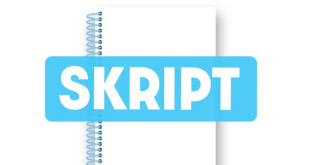The Ultimate Candlestick Patterns Guide: Mastering the Art of Reading Stock Charts
Introduction
Have you ever looked at a stock chart and wondered what all those colorful bars and lines mean? Those aren’t just random shapes; they’re telling you a story about the market’s mood, trends, and potential future moves. Candlestick patterns are a vital tool in technical analysis, a technique that traders use to make informed decisions about buying and selling stocks. Whether you’re new to trading or have some experience under your belt, understanding these patterns is essential. Think of it as learning to read a new language—once you get the hang of it, the charts will begin to speak to you.
In this guide, we’ll explore the most important candlestick patterns you need to know, how to interpret them, and how they can be applied in your trading strategy. Learn to master candlestick patterns in stock market charts with this comprehensive guide. Perfect for those taking an online technical analysis course or stock market class.
Table of Contents
| Sr# | Headings |
| 1 | What Are Candlestick Patterns? |
| 2 | History and Origin of Candlestick Patterns |
| 3 | How to Read a Candlestick Chart |
| 4 | The Importance of Candlestick Patterns in Technical Analysis |
| 5 | Basic Candlestick Patterns |
| 6 | Bullish Candlestick Patterns |
| 7 | Bearish Candlestick Patterns |
| 8 | Continuation Patterns |
| 9 | Reversal Patterns |
| 10 | Advanced Candlestick Patterns |
| 11 | Combining Candlestick Patterns with Other Indicators |
| 12 | Common Mistakes to Avoid |
| 13 | Practical Examples: Candlestick Patterns in Action |
| 14 | How to Practice Reading Candlestick Patterns |
| 15 | Conclusion |
1. What Are Candlestick Patterns?
Candlestick patterns are visual representations of price movements in the stock market, often used by traders to predict future market behavior. Each “candlestick” on a chart shows four key pieces of information: the opening price, closing price, high, and low for a specific time period. When viewed together, these candlesticks can form patterns that indicate whether the market is likely to go up, down, or stay the same.
Imagine you’re in a poker game, and each player’s facial expression gives away clues about their next move. Similarly, candlestick patterns can provide hints about what might happen next in the market.
2. History and Origin of Candlestick Patterns
Candlestick patterns have a fascinating history that dates back to 18th-century Japan. They were first developed by rice traders to track market prices and predict future trends. The method was refined over the years and eventually became a cornerstone of modern technical analysis. Understanding the origins of these patterns can give you greater insight into their reliability and application.
3. How to Read a Candlestick Chart
Reading a candlestick chart might seem daunting at first, but it’s easier than you think. Each candlestick has a body (the thick part) and wicks or shadows (the thin lines above and below). The color of the body indicates whether the stock closed higher (often shown in green or white) or lower (typically shown in red or black) than it opened. The wicks show the highest and lowest prices during that period.
Let’s break it down:
- Body: The distance between the opening and closing prices.
- Upper Wick: The highest point of the price during the period.
- Lower Wick: The lowest point of the price during the period.
By analyzing the size, shape, and color of these candlesticks, traders can gauge the market sentiment and make informed decisions.
4. The Importance of Candlestick Patterns in Technical Analysis
Candlestick patterns are an essential part of technical analysis because they help traders understand market psychology. They reveal how buyers and sellers are behaving, which can be critical in making trading decisions. Whether you’re a day trader, swing trader, or long-term investor, incorporating candlestick patterns into your analysis can enhance your ability to predict market trends.
5. Basic Candlestick Patterns
Before diving into more complex patterns, it’s important to grasp the basics. Here are a few types of candlestick patterns every trader should know:
- Doji: A candlestick with almost equal opening and closing prices, indicating indecision in the market.
- Hammer: A candlestick with a small body and a long lower wick, often signaling a potential reversal after a downtrend.
- Shooting Star: The opposite of the candlestick patterns hammer, this pattern has a small body and a long upper wick, suggesting a potential reversal after an uptrend.
These basic patterns are the building blocks of more complex formations and can be extremely helpful in predicting market movements.
6. Bullish Candlestick Patterns
Bullish patterns signal that the market may be about to move upward. Recognizing these can help you capitalize on upward trends. Some common bullish patterns include:
- Bullish Engulfing: This occurs when a small red candlestick is followed by a larger green candlestick, which completely engulfs the red one, indicating strong buying pressure.
- Morning Star: A three-candlestick pattern that suggests a reversal from a downward trend to an upward trend.
- Three White Soldiers: This pattern consists of three consecutive green candlesticks, each closing higher than the last, signaling a strong bullish trend.
By identifying these patterns, traders can enter trades early in an uptrend, maximizing their potential profits.
7. Bearish Candlestick Patterns
On the flip side, bearish patterns suggest that the market might be heading downward. Knowing these patterns can help you avoid losses or even profit from a declining market. Key bearish patterns include:
- Bearish Engulfing: This pattern is the opposite of the bullish engulfing, where a small green candlestick is followed by a larger red one, signaling strong selling pressure.
- Evening Star: The counterpart to the Morning Star, this three-candlestick pattern indicates a potential reversal from an uptrend to a downtrend.
- Three Black Crows: Similar to the Three White Soldiers, this pattern consists of three consecutive red candlesticks, each closing lower than the previous one, indicating a strong bearish trend.
These patterns are crucial for traders who want to protect their investments during market downturns.
8. Continuation Patterns
Continuation patterns indicate that the current trend—whether up or down—is likely to continue. These patterns are useful for traders who want to stay in a winning trade for as long as possible. Common continuation patterns include:
- Rising Three Methods: A bullish pattern that consists of a long green candlestick, followed by three smaller red candlesticks, and then another long green candlestick. This pattern suggests the uptrend will continue.
- Falling Three Methods: The bearish counterpart, with a long red candlestick, followed by three smaller green candlesticks, and then another long red candlestick, indicating the downtrend will continue.
Recognizing continuation patterns allows traders to hold onto winning positions longer, maximizing profits.
9. Reversal Patterns
Reversal patterns signal that the current trend is about to change direction. These patterns are essential for traders who want to time their entries and exits effectively. Key reversal patterns include:
- Head and Shoulders: A complex pattern that signals a reversal from an uptrend to a downtrend. It consists of three peaks, with the middle peak being the highest.
- Inverse Head and Shoulders: The bullish counterpart, signaling a reversal from a downtrend to an uptrend.
- Double Top and Double Bottom: These patterns indicate a reversal after two failed attempts to break a price level, either on the upside (Double Top) or downside (Double Bottom).
Understanding reversal patterns can help traders avoid getting caught on the wrong side of a trade.
10. Advanced Candlestick Patterns
For those who have mastered the basics, advanced candlestick patterns offer deeper insights and more precise trading signals. Some of these patterns include:
- Three Line Strike: A bullish pattern where three red candlesticks are followed by a green candlestick that engulfs all three, suggesting a strong reversal.
- Abandoned Baby: A rare but powerful reversal pattern that occurs after a gap, with a Doji candlestick followed by another gap and a large candlestick in the opposite direction.
- Three Inside Up/Down: A reversal pattern where a smaller candlestick is followed by a larger candlestick in the opposite direction, indicating a potential trend reversal.
Advanced patterns require more experience to identify but can offer highly reliable trading signals.
11. Combining Candlestick Patterns with Other Indicators
While candlestick patterns are powerful tools on their own, combining them with other technical indicators can enhance their accuracy. For example, using moving averages, Relative Strength Index (RSI), or Fibonacci retracements alongside candlestick patterns can provide stronger confirmation of trends and reversals.
Think of it as having multiple sources of information when making a decision—it increases your confidence and accuracy.
12. Common Mistakes to Avoid
Even experienced traders can fall into traps when using candlestick patterns. Here are some common mistakes to watch out for:
- Over-reliance on a single pattern: Candlestick patterns are most effective when used in conjunction with other analysis tools.
- Ignoring the broader trend: Always consider the overall market trend before acting on a pattern.
- Forcing patterns: Sometimes, traders see patterns where none exist. It’s important to be objective and not force a pattern onto the chart.
Avoiding these mistakes can help you make more accurate trading decisions.
13. Practical Examples: Candlestick Patterns in Action
To solidify your understanding, let’s look at some real-world examples of candlestick patterns in action. By analyzing historical stock charts, you can see how these patterns have played out in the past and how they might apply to current market conditions.
For example, the Bullish Engulfing pattern has frequently been a reliable indicator of an upward trend in various stocks, such as during the recovery phase after a market dip.
14. How to Practice Reading Candlestick Patterns
Practice makes perfect, especially when it comes to reading candlestick patterns. You can start by reviewing historical charts and identifying patterns. Paper trading platforms also offer a risk-free way to practice applying what you’ve learned.
Consider joining an stock market training chennai , technical analysis course or a course on the stock market to get structured guidance and additional practice opportunities.
15. Conclusion
Candlestick patterns are like a secret language of the stock market. Once you learn to read them, you’ll have a significant edge in your trading. Whether you’re a beginner or an experienced trader, mastering these patterns can enhance your ability to make informed decisions, leading to better trading outcomes. Keep practicing, stay patient, and soon enough, those charts will start telling you their secrets.
FAQs
1. What is the most reliable candlestick pattern?
The most reliable candlestick pattern can vary depending on the context, but the Bullish Engulfing and Bearish Engulfing patterns are often considered strong indicators of trend reversals.
2. Can candlestick patterns predict the future?
While candlestick patterns can provide insights into market trends, they are not foolproof and should be used alongside other analysis tools for better accuracy.
3. How long does it take to learn candlestick patterns?
The time it takes to learn candlestick patterns varies from person to person, but with regular practice, most people can become proficient within a few months.
4. Are candlestick patterns useful for all types of trading?
Yes, candlestick patterns can be useful for day trading, swing trading, and even long-term investing. The key is to adapt your analysis to the time frame you’re trading in.
5. Can I use candlestick patterns for cryptocurrencies?
Absolutely! Candlestick patterns are not limited to stocks and can be applied to any financial market, including cryptocurrencies, forex, and commodities.







